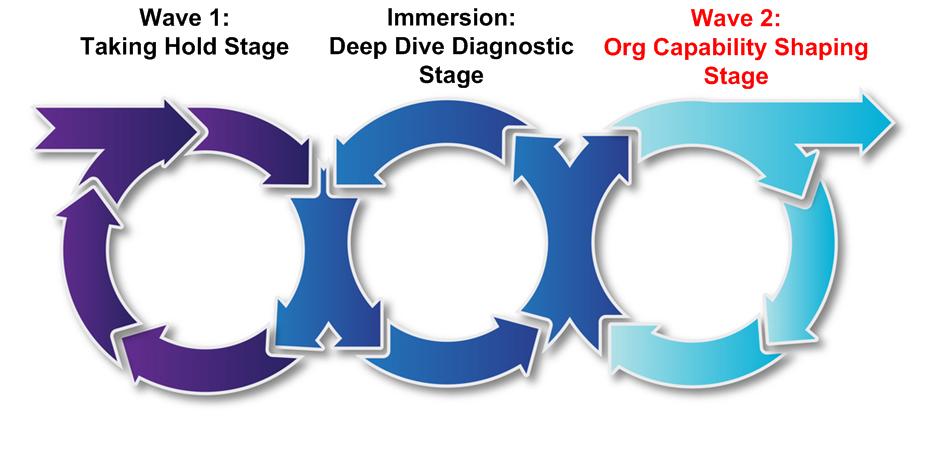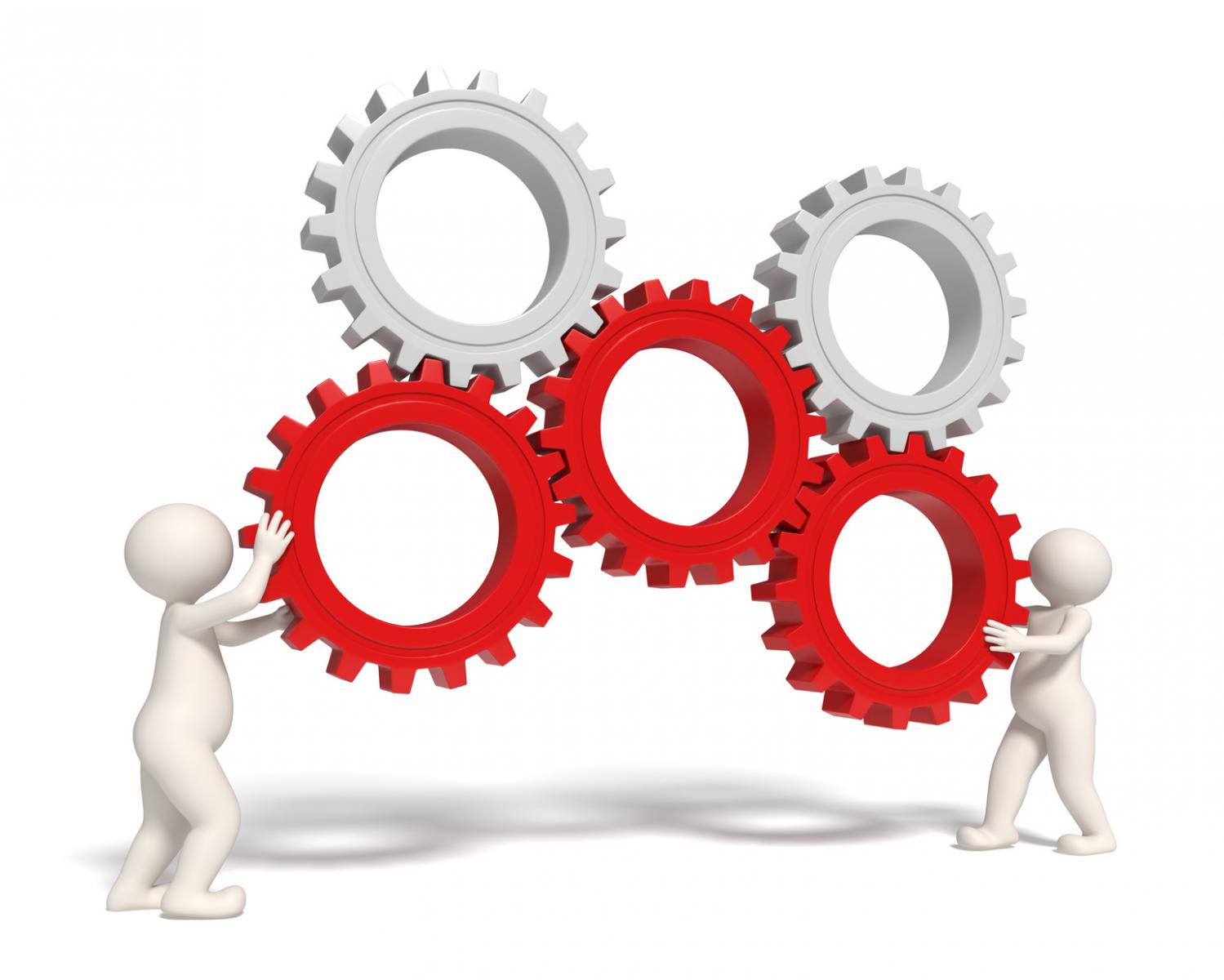Wave 2: Shaping the Required Organizational Capabilities
...and the Managing Multiple Change Processes

Now that the executive's leadership team is selected and confirmed, the team can focus both on its organizational capabilities and those capabilities that involve other internal organizations and teams. The two major streams of work to be led by the executive at this stage are:
1) The development and implementation of specific action plans to shape the organizational capabilities to drive the strategy, and
2) The management of the overall organizational change process in the larger organizational context and its respective stakeholders to create receptivity, acceptance, and even support for the multiple changes being implemented in the larger organization.
1. Shaping the Required Organizational Capabilities

The Organizational Capability Assessment (OCA) process, whether an informal discussion or a more formal diagnostic process, should identify the root causes for underperformance or resistance to change. The initial OCA typically results in a deeper dive into those organizational capabilities that are identified as capabilities in need of development. The OCA and the follow-on Organizational Capability Shaping (OCS) efforts use a common framework for considering design alternatives and requirements for effective performance.
The three primary elements the Wave 2 change implementation teams will focus on are defining an overall capability process (e.g., new product development process), the organizational structure and key roles that will drive, support, and enable that process and, the corresponding competencies required for fully effective performance by the people who are incumbents in each key role.
The teams are typically challenged with determining a few recommended alternative designs for each organizational capability, as there is no one perfect design, and there are tradeoffs of advantages and disadvantages to each design. Tradeoff considerations include the limitation of time and resources to adopt a new process, a structure that shifts power and disrupts the current political structure, or a design that requires world class incumbents who we simply are unable to attract and retain. As a result, alternatives are offered and adjustments are made. Once an alternative is selected, the goals, accountabilities, and rewards or incentives must also be aligned with the intended capability and business outcomes.
Regarding the other elements shown in the model above, strategy provides the larger context from which the primary organizational capabilities are identified and defined. Technology and other Non-People Assets are other inputs or context for the design.

Shaping Organizational Capabilities and Their Alignment
2. Managing Large Scale Organizational Change
Western business has a dismal history of the successful management of organizational change of any significance. It turns out that the typical failure rate of mergers and acquisitions of approximately 65% is not much different than the typical failure rate for large scale change efforts in businesses not undergoing acquisition integrations.7 Most executives are not taught the required leadership skills, conceptual frameworks, and processes to manage significant organizational change. What they have learned is often a result of whatever they have been able to glean from observing others and their own personal trial-and-error.
We have synthesized and field tested "A General Model for Managing Organizational Change" that we use to help clients determine where they are in the change process and what they should be doing next to create fertile ground for their change initiatives. Because change is messy, evolving, and often iterative, the key components of this model are referred to as "Factors" rather than "Steps." Using this label, we are trying to avoid the misuse of the model by linear thinkers who may view the model as a one-directional vector rather than a guide when one must take two steps forward and one step back. For each of these Factors, we identify a menu of four, five, or more actions that the new executive might choose from, again using it as a map and tool box through the continuing change process.
A Summary of the Factors in "A General Model for Managing Organizational Change:"
Factor 1. Establish a Need and Sense of Urgency for Change.
Factor 2. Develop a Critical Mass of Sponsors for Change.
Factor 3. Develop a Shared Vision of the Desired Future State.
Factor 4. Communicate the Vision and Engage Stakeholders.
Factor 5. Build Momentum Through Empowered Action.
Factor 6. Monitor Progress.
Factor 7. Generate Early Successes.
Factor 8. Expand the Change Efforts.
Factor 9. Stabilize the New Organization.
Factor 10. Plant the Seeds for the Next "Revolution."
3. Completion of Executive Coaching Services
Once the organizational design change plans are drafted and the overall supporting change management plan model and techniques have been successful transferred to the new executive and most of his executive team, the executive coach negotiates his or her exit and the completion of the assignment. This typically happens in the earlier phases of the Wave 2 change processes. Once the action plans are being successfully implemented, we have found that the new executive and his or her team should be able to continue to manage and implement their changes without further significant involvement of the executive coach. Of course, they can always reengage the executive coach on an as-needed basis. Being definitive about an ending, we want to prevent any possibility of creating a long term dependent or parasitic relationship between the coach and the new executive that is beyond its original intent.
Related Links:
A Sample of Organizational Diagnostic Tools (Typically during the Immersion Stage)
Wave 2: Shaping the Required Organizational Capabilities (Current Page)
###
Wiznami Corp. is an a senior executive coaching service based in Naples, Florida.

